Archivo de noticias y eventos
101 - 150 de un total de 2414
También puede acceder a la lista de noticias publicadas en los medios relacionadas con el Instituto de Astrofísica de Andalucía - CSIC.
Pages
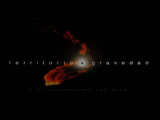
|
27/11/2024
‘Territorio gravedad’, la docu-serie española sobre el cosmos, regresa con su segunda temporada Los cuatro nuevos capítulos de la serie, producida por el Instituto de Astrofísica de Andalucía (IAA-CSIC), podrán verse a partir del 29 de noviembre en Filmin y Vimeo On Demand |
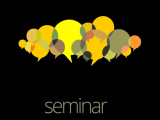
|
31/01/2025 - 12:30
Resolving Stellar Angular Diameters with Asteroid Occultations Occultations have been used for measuring stellar angular diameters since 1936 when French astronomy M. A. Arnulf measured the radius of Regulus during a lunar occultation. Since then, astronomers have used lunar occultations to measure the angular diameters of hundreds of bright stars m≤5. The technique of measuring an angular diameter using lunar occultations is based on the diffraction of light around the limb of the moon. With this technique... Joshua Bartkoske |
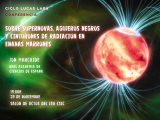
|
28/11/2024 - 19:00
Sobre supernovas, agujeros negros y cinturones de radiación en enanas marrones En la charla se abordará de modo conciso lo que es esencial a cada uno de esos descubrimientos que nos han permitido conocer los detalles de la expansión de las supernovas, del entorno de los agujeros negros masivos y de los cinturones de radiación que rodean a las enanas marrones como lo hacen a Júpiter o la Tierra. Jon Marcaide |

|
02/12/2024 - 02/12/2024
https://indico.iaa.csic.es/event/18/ Granada |

|
20/11/2024
El proyecto astronómico J-PAS revela los primeros datos de su cartografiado del universo El proyecto, coliderado por el Instituto de Astrofísica de Andalucía (IAA-CSIC), pone a disposición de la comunidad científica los primeros doce grados cuadrados del mapa tridimensional del universo que se está llevando a cabo desde el Observatorio Astrofísico de Javalambre (OAJ) El área estudiada contiene 550.000 objetos astronómicos y es sólo una pequeña muestra de los datos del cartografiado, que observará miles de grados cuadrados en la... |

|
31/10/2024 - 31/10/2024
https://indico.iaa.csic.es/event/17/ Granada |

|
03/12/2024 - 12:30
Experimental ice simulations for the interpretation of ice and organics observations in the Solar System The harsh conditions in space (ultra-high vacuum, cryogenic temperatures, and radiation) are simulated in laboratory chambers to study ice properties and processes. UV photons/X-rays/ions impact on the ice covering microscopic dust particles in dense interstellar clouds, comets, icy moons and planetary surfaces. Radiation produces radicals and reactive species changing the initial composition of the ice (made of simple species like... Dr. Guillermo Muñoz Caro |

|
12/12/2024 - 12:30
Informative Session for Foreign New Hires If you are a foreigner who has recently joined the IAA and haven not yet completed all the steps to formalize your residency in Spain, or if you would like to learn about some of the optional bureaucratic procedures that could make things easier for you living here, please join us for this informative session led by the Area of Visitor Assistance. Lauren C. Smith |

|
25/11/2024 - 25/11/2024
https://indico.iaa.csic.es/event/20/ Granada |

|
13/11/2024
Captan por primera vez la señal de un sistema binario de agujeros negros masivos interactuando con una nube de gas El Instituto de Astrofísica de Andalucía (IAA-CSIC) participa en este estudio aportando datos clave obtenidos con su espectrógrafo ALFOSC, instalado en el telescopio Óptico Nórdico (NOT) en el Observatorio del Roque de los Muchachos, en La Palma Esta información complementa la proporcionada por el Observatorio Swift de la NASA y el proyecto ZTF |
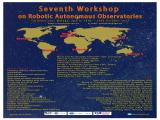
|
16/10/2024 - 20/10/2024
http://astrorob.iaa.es Torremolinos |
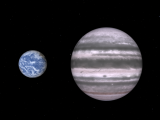
|
31/10/2024
Descubren varios planetas similares a Neptuno en una región teóricamente despoblada El estudio, centrado en la naturaleza planetaria de trece objetos de interés de la misión TESS, confirma la existencia de cinco nuevos planetas alrededor de estrellas enanas rojas o de tipo M, más pequeñas y frías que nuestro Sol Los planetas se hallan dentro o muy próximos al “desierto de los Neptunos”, región donde se ha detectado una carencia de planetas con propiedades comparables a las de Neptuno |

|
10/12/2024 - 12:30
ESERO, from space to the classroom With the slogan ‘from space to the classroom’, and building on the fascination that students have for space, the European Space Agency's (ESA) European Space Education Resource Office in Spain (ESERO Spain) provides resources to primary and secondary school teachers to improve their literacy and STEM (Science, Technology, Engineering and Mathematics) skills. Using the theme of space as a context for inspiration and motivation, ESERO runs a... Dr. Manuel González |
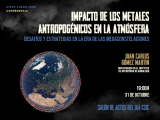
|
31/10/2024 - 19:00
Impacto de los Metales Antropogénicos en la Atmósfera: Desafíos y Estrategias en la Era de las Megaconstelaciones En las próximas décadas se espera un incremento significativo en el número de satélites en la órbita baja terrestre, principalmente impulsado por el crecimiento de las megaconstelaciones de telecomunicaciones de banda ancha. La estrategia de 'cero residuos' de las agencias espaciales busca evitar la generación de grandes cantidades de basura espacial mediante la desintegración programada de vehículos usados y satélites inactivos en la atmósfera... Juan Carlos Gómez Martín |

|
21/10/2024
El CSIC apoya el manifiesto de adhesión al proyecto ‘Granada Capital Europea de la Cultura 2031’ El CSIC apoya el manifiesto de adhesión al proyecto ‘Granada Capital Europea de la Cultura 2031’ |

|
14/11/2024 - 12:30
Ozone and the Search for Life in the Universe As we approach the era where we will be able to characterize the atmospheres of terrestrial exoplanets, we are put on a path to answer one of humanity's most compelling questions: are we alone in the universe? Molecular oxygen (O2) with a reducing gas (i.e., methane) is widely regarded as a promising biosignature - a sign of life in the atmospheres of terrestrial exoplanets. However, there are circumstances in which O2 will be very difficult or... Dr. Thea Kozakis |

|
17/10/2024
Premios "Granada. Ciudad de la Ciencia" 2023 Celebrados los Premios "Granada, Ciudad de la Ciencia 2023" |
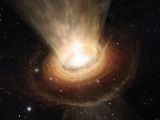
|
15/10/2024
Los agujeros negros supermasivos alteran la evolución química de las galaxias El IAA-CSIC participa en este estudio que muestra cómo la actividad de un agujero negro supermasivo escondido en el corazón de un cuásar ha transformado la composición química del gas existente en la galaxia |

|
06/02/2025 - 12:30
Equality and harrassment in the CSIC. A case of study: IAA In this talk I will present the equality plans in the CSIC with a critical look at the particular situation of the IAA. I will focus on the current IAA Equality plan (the first one) and the changes it needs to live in an increasingly friendly environment. Equality will have a positive impact on the quality of the science we produce. Dr. Josefa Masegosa Gallego |
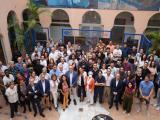
|
08/10/2024
El Instituto de Astrofísica de Andalucía recibe la visita de Juan Carlos Cortés, director de la Agencia Espacial Española El director de la Agencia Espacial Española (AEE) se ha reunido con los equipos responsables de los proyectos de exploración espacial en los que participa el IAA-CSIC. El objetivo es establecer protocolos de seguimiento, identificar posibles necesidades y conocer las perspectivas de cara a futuros desarrollos. |
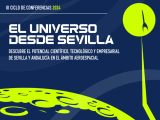
|
04/10/2024
El Universo desde Sevilla III Esta iniciativa, que se desarrollará con tres ponencias durante los meses de octubre y noviembre, está coordinada por el investigador del Instituto de Astrofísica de Andalucía (IAA-CSIC) Emilio J. Alfaro Navarro. |

|
03/10/2024
Un congreso debatirá sobre las implicaciones de la astrofotografía en investigación y divulgación El Congreso Astrofotografía 2024 se celebrará en el Rectorado de la UCO del 4 al 6 de octubre El Instituto de Astrofísica de Andalucía (IAA-CSIC) es patrocinador y forma parte del comité organizador local (LOC) |

|
31/10/2024 - 12:30
Using CHEOPS to confirm small transiting exoplanets orbiting bright stars Exoplanets which transit their host stars are unique in allowing detailed characterisation of planetary radius, mass and atmospheric properties. NASA's TESS mission, which has so far observed 97% of the sky with precise photometry, is especially adept at detecting small transiting planets orbiting the brightest... Dr. Hugh Osborn |
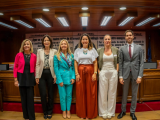
|
27/09/2024
Histórica Jornada en el Senado para convertir el Cielo Nocturno en el ODS18 Alicia Pelegrina, Coordinadora de la Oficina de Apoyo a la Actividad Científica del Severo Ochoa-IAA y Responsable de Proyectos Institucionales de la Oficina de Calidad del Cielo IAA-CSIC, ha participado en esta jornada |

|
09/09/2025 - 12:30
TBP tbp Dr. Pedro de la Luque Torre |

|
06/11/2024 - 12:30
New UGR proceedings for PhDs Every year we all doubt what needs to be done and uploaded for the university. This is a reminder and updated seminar about the current proceedings that affect the PhD, especially important since the UGR has modified some things recently. Dr. Antonio García Hernández |

|
24/10/2024 - 12:30
SO colloquium: Role of Astrophotonics in Astronomy: The MARCOT Pathfinder Dr. Kalaga Venu Madhav, a renowned astrophysicist from the Leibniz Institute for Astrophysics Potsdam, will present a colloquium on the role of astrophotonics in astronomy, focusing on the MARCOT Pathfinder project. The talk will cover advancements in astrophotonic technologies and their applications in modern astronomical instrumentation. Dr. Madhav will discuss the development and implementation of photonic devices in telescopes, their impact... Dr. Kalaga Madhav |

|
21/11/2024 - 12:30
Towards the Standardization of the Modeling of Multi-Frequency Observations Blazars, a class of Active Galactic Nuclei (AGN) with relativistic jets oriented toward Earth, are powerful and highly variable emitters across the electromagnetic spectrum. Time-domain multi-messenger and multi-wavelength (MWL) studies are essential for understanding the physical processes at work on these systems, yet they often rely on proprietary tools specific to each instrument for reconstructing and modeling the collected data. In this... Dra. Mireia Nievas Rosillo |
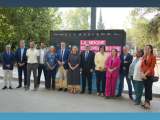
|
23/09/2024
La Noche Europea de l@s Investigador@s llega con 300 actividades para hacer la ciencia más cercana y social El IAA-CSIC participa con talleres, charlas y una mesa de realidad virtual en un stand propio en el Paseo del Salón |

|
13/09/2024
La Noche de l@s Investigador@s 2024 Tenéis cita con la Noche Europea de l@s Investigador@s el 27 de septiembre en Granada, en el Stand del IAA-CSIC en el Paseo del Salón. |

|
26/11/2024 - 28/11/2024
https://indico.iaa.csic.es/e/HighEnergyPulsars |
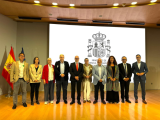
|
06/09/2024
Celebración de la Asamblea General Extraordinaria de la Alianza SOMMa Isabel Márquez recogió la acreditación del IAA, de la Convocatoria de 2021 |

|
05/09/2024
El investigador del IAA-CSIC Rafael Luque obtiene una ayuda ‘Starting Grant’ del Consejo Europeo de Investigación La ayuda de 1.5 millones de euros para los próximos cinco años ayudará a comprender las propiedades los planetas de tipo subneptuno |
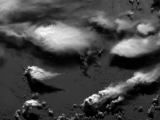
|
23/08/2024
JANUS, la cámara óptica de la sonda JUICE de la ESA, captura impresionantes imágenes durante su primer sobrevuelo lunar y terrestre JANUS, la cámara óptica de la sonda JUICE de la ESA, captura impresionantes imágenes durante su primer sobrevuelo lunar y terrestre |

|
27/09/2024 - 12:30
Who Is Afraid of the Dark (Energy)? Cosmic acceleration dominates the behavior of the recent universe, with some fundamentally new physics at its heart. Recent data gives a tantalizing suggestion that the dark energy behind it is more complicated than a cosmological constant. Nevertheless, we do know a lot about how to describe dark energy behavior. Data within the next year has great promise to give further insight, and exciting new instruments are being planned. Dr. Eric Linder |

|
10/10/2024 - 12:30
Uncovering the magnetized path of massive star formation Both observational and theoretical studies suggest that the magnetic field plays an important role in the process of massive star and cluster formation. However, many open questions still remain, including the exact role of B-field at the different scales (from cloud to disk scales) and its importance compared to turbulence, feedback and self-gravity. Multi-scale studies of the morphology and strength of the magnetic field are thus crucial to... Dr. Chi Yan (Paul) Law |

|
07/08/2024
Desvelado el origen de la emisión persistente en las enigmáticas Ráfagas Rápidas de Radio Un nuevo estudio internacional en el que participa el IAA-CSIC identifica una burbuja de plasma como el origen de la emisión persistente observada en algunas ráfagas rápidas de radio (FRBs) Los datos también permiten a los investigadores determinar la naturaleza del "motor" que alimenta estas misteriosas fuentes Los resultados se han publicado hoy en Nature |

|
17/10/2024 - 12:30
SO Colloquium: Radio eyes for the Sun, Heliosphere and Ionosphere: Status and plans for the SKAO era The Square Kilometre Array Observatory (SKAO) represents a monumental leap in radio astronomy technology, promising to redefine our understanding of the universe through its unprecedented capabilities. As we stand on the brink of the SKAO era, this talk aims to elucidate the transformative potential of SKAO for solar physics, heliospheric, and ionospheric research. The SKAO's advanced radio telescopes, with their superior angular, spectral, and... Dr. Pietro Zucca |

|
13/02/2025 - 12:30
SO Colloquium: Present and future of exoplanet research The search for new worlds in the Galaxy in the past three decades has been highly successful and the prospects for the next decade are even brighter. A succession of space missions and ground-based facilities defines a timeline extending well into the 2030s. Many advances on the planet discovery front will come from the PLATO mission, which will find long-period planets and even true Earth analogues, and from the many ongoing and future precise... Dr. Ignasi Ribas |
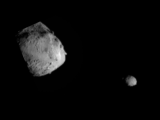
|
30/07/2024
La misión DART de la NASA capta con alta resolución el sistema binario de asteroides Dídimo El estudio, que analiza la geología y origen de este sistema binario de asteroides cercano a la Tierra, concluye que la superficie de Dídimo es entre 40 y 130 veces más antigua que su satélite Dimorfo El trabajo ha sido publicado en cinco artículos de Nature Communications y el IAA-CSIC participa en uno de ellos |

|
28/11/2024 - 12:30
SO Colloquium: Cosmic chemical evolution: here, there, and everywhere Metals play a very important role in star formation and stellar evolution. Amongst other things they control the cooling of the interstellar gas, thus allowing the formation of stars; they affect the radiation transport, through the opacities involved in the different microscopic processes; and they have the most important role in the dust formation and in the mass loss from stars. Metals are formed inside stars. Therefore, it is expected that... Profa. Ángeles Díaz |

|
26/09/2024 - 11:00
The stellar distribution in ultra-faint dwarf galaxies suggests deviations from the collisionless cold dark matter paradigm Unraveling the nature of dark matter (DM) stands as a primary objective in modern physics. I will present evidence suggesting deviations from the collisionless Cold DM (CDM) paradigm. In the standard cosmological model the dark matter (DM) particles are collisionless and, because of this very nature, they develop halos with the characteristic central cusp known as NFW profile. Real galaxies do not show NFW profiles but, rather, have a DM mass... Dr. Jorge Sánchez Almeida |
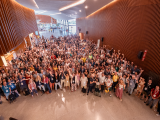
|
19/07/2024
Concluye la XVI Reunión Científica de la Sociedad Española de Astronomía con cifras de récord Concluye la XVI Reunión Científica de la Sociedad Española de Astronomía con cifras de récord |
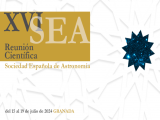
|
15/07/2024 - 19/07/2024
https://www.granadacongresos.com/sea2024 Granada |

|
15/07/2024
La presidenta del CSIC visita el Instituto de Astrofísica de Andalucía La presidenta del CSIC visita el Instituto de Astrofísica de Andalucía y la Estación Experimental del Zaidín en Granada |
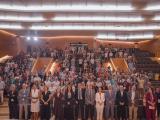
|
15/07/2024
Inaugurada la XVI Reunión Científica de la SEA La XVI Reunión Científica de la Sociedad Española de Astronomía se ha inaugurado esta mañana en el Parque de las Ciencias de Granada |
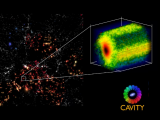
|
12/07/2024
El IAA-CSIC participa en un proyecto que ofrece a la comunidad científica imágenes tridimensionales de 100 galaxias El material ya está disponible a través de la web cavity.caha.es CAVITY es el nombre de esta iniciativa internacional cuyo objetivo es monitorear hasta 400 galaxias en el futuro para conocer su formación y evolución |

|
04/11/2024 - 08/11/2024
https://indico.iaa.csic.es/event/16/ Granada |
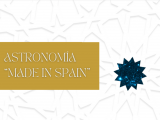
|
17/07/2024
Astronomía “Made in Spain" En el marco de la XVI Reunión Científica de la SEA (15-19 de julio), el IAA-CSIC ha organizado este evento |
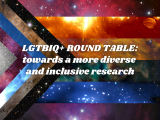
|
25/06/2024
LGTBIQ+ ROUND TABLE: towards a more diverse and inclusive research Con motivo del Día Internacional del Orgullo LGBT, la Comisión de Igualdad, Diversidad e Inclusión del IAA-CSIC organizó el 25 de junio la mesa redonda "LGTBIQ+ ROUND TABLE: towards a more diverse and inclusive research" |